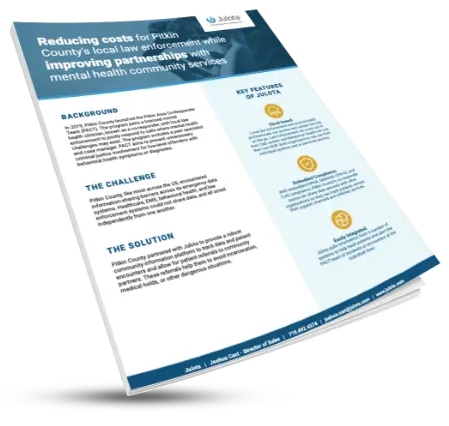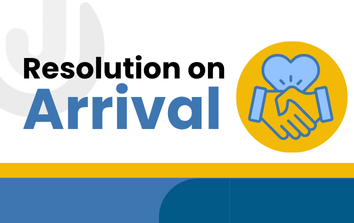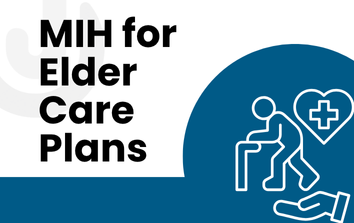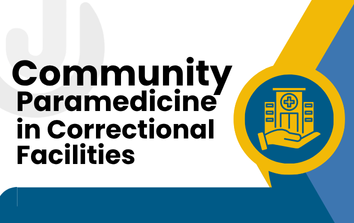Some of the risks of community paramedicine include getting in over your head, causing frustration among employees at your service, financial struggles due to a lack of planning, and difficulty in transitioning program participants toward independent living. However, as you’ll see, most of the risks in community paramedicine can be mitigated with responsible planning and coordination.
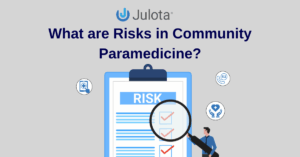
What Can Cause a Community Paramedicine Program to Fail?
Every action in life carries an element of risk; however, that risk is vastly increased when the action is performed irresponsibly. As we’ll discuss in this article, there are ways to run a community paramedic program responsibly, and then there are ways to run a community paramedic program irresponsibly.
Understanding both ends of that spectrum will give you a strong idea of what you’re undertaking when you choose to initiate and continue to operate a community paramedic program. For this article, we will consider “risks of community paramedicine” in relatively broad terms – encompassing everything from financial risks to risks to employees and patients.
Here are some of the risks of community paramedicine:
- Jumping in Too Deep Too Fast
- The Risk of Changing Job Roles for Paramedics Too Fast
- Financial Struggle Due to Poor Planning
- Residents Becoming Reliant Upon Community Paramedicine
- Burnout from Trying to Go in Too Many Directions
See more details below.
The Risk of Jumping in Too Deep, Too Fast
What do we constantly tell our children as they grow and begin playing in the water? Stay away from the deep end. Of course, as they get older, we will work with them and slowly encourage them to extend themselves as their swimming skills safely allow. On the other hand, we all know how dangerous it is to jump into deep water without knowing how to swim.
And this leads us to community paramedicine programs. There’s a dilemma to starting any new program that everyone should keep in mind. Let’s call this the dilemma of the enthusiastic and ambitious. What does this mean?
On the one hand, we need people who are enthusiastic and ambitious to start community paramedic programs; however, at times, these same people may attempt to take on too much too soon.
Sometimes, for the ambitious person, starting small isn’t an option. When this happens, there can be an initial period of excitement and progress, but then, when the real work starts (and the problems begin), these programs can quickly slip underwater.
How to mitigate this risk: If you’re someone who has a big vision for the future of your community paramedic program, don’t limit yourself. However, try to break the process down into simple, achievable steps, and then slowly wade out as you become more comfortable and confident.
Keep in mind that community paramedicine is a collaborative effort, much like a team sport. It’s also essential that everyone involved feels comfortable, well-trained, and prepared when it comes time to expand. A crucial step is to perform a needs assessment before initiating any new MIH-CP program. You must know that your MIH mission is needed within the community.
The Risk of Fast-Changing Job Roles in Community Paramedicine
Another potential risk is alienating your workforce with a job they are not yet trained to perform. As anyone in any workplace knows, many people dislike change, and this sentiment applies to almost all types of change. Whether good or bad, some people will be resistant to new things.
For this reason, it is crucial to involve all paramedics who will be engaged in MIH in the early stages of discussion and planning. You want to get their feedback, ensure that they are well-trained, and that they are fairly compensated for the new responsibility. Most of all, you want them to be excited.
Some departments, including Fire and EMS, report that they have started Community Paramedic programs, but “nobody wanted to do it.” The reason for this is likely because they violated the principles listed above. If you drop something new in someone’s lap and expect them to adapt and enjoy it, you should not be surprised when it doesn’t go as planned.
You must be thoughtful about how you present community paramedicine to your employees and co-workers. For them to be fully committed, they need to feel some agency and to really see how the new program will improve their own position.
In cases where companies introduce new initiatives to their paramedics without allowing them time to plan and prepare, it’s not uncommon for employees to leave and seek work elsewhere, which is the complete opposite of what we’re trying to achieve with MIH-CP.
How to avoid this risk: Be tactful about whom you approach to become a community paramedic. Some may be very enthusiastic about the new responsibility, while others may not. Considering the title of community paramedic as a promotion, along with a pay increase, is appropriate, as the tasks of the skilled MIH clinician extend beyond those of a typical first responder.
The Risk of Financial Struggle Due to Poor Planning
It can be challenging to manage the financial strain of launching a new program within a department. One of the most significant risks is not reaching out to people to make connections for alternative funding. There’s nothing wrong with starting a program with a grant, but if the leaders of that program don’t take the time to establish relationships before that money runs out, the program could collapse.
How to mitigate this MIH risk: Thankfully, many programs around the country have mitigated this risk by seeking partnerships with community members who share their goal. Not only that, but more and more states are creating pathways to allow community paramedic programs to bill insurance directly.
The Risk of Residents Becoming Reliant Upon Community Paramedicine
Community paramedicine is intended to be a temporary aid in the healing process, not a permanent solution. What does this mean? While community paramedicine is about being helpful, the truth is that we want people to be able to function safely and live healthy lives independently.
As much as MIH-CP wants to help, we don’t want people to become overly reliant on the services in a way that becomes detrimental to their health. In a certain sense, we want to think about community paramedicine more as a rehabilitation service than a permanent fixture in the lives of everyone they encounter.
Now, of course, there are nuances. There will be some MIH-CP programs with the capacity to deliver more long-term care. In some cases, the community paramedic program will establish and maintain a relationship with an individual for the rest of their life. However, there is a considerable risk. The considerable risk is becoming just another extension of the 911 system that becomes overrun with people who rely on it for their everyday needs.
How to mitigate this MIH risk: The goal of community paramedicine is to prevent and ultimately reduce super-utilizers, rather than simply becoming another point of contact for them. For this reason, community paramedic programs should clearly communicate their goals to patients.
When possible, these goals should focus on delivering genuine independence to people in the community. So rather than saying, “Let’s make it a goal that I show up every Friday to remind you to take your medication,” consider something like, “Let’s make it a goal that you can safely manage your own medications within one month.”
The Risk of Burnout from Trying to Go in Too Many Directions
This is similar to the first risk, but it differs in that it’s not so much about a lack of knowledge, but rather an overexpenditure of resources. Indeed, there could be a thousand needs in your community. And there could be a hundred of them that community paramedicine could help solve. However, if you try to reach all those needs all at once, something is going to give – and it will likely be your program.
How to mitigate this MIH risk: Quality over quantity. Before you start expanding your program, be sure that you can do what you’re currently doing well.
Key Points and Considerations: Reducing Risk Associated with Community Paramedicine
Community paramedicine is a valuable concept, but it also carries some risks. Overambitious programs can overextend themselves, confusing and frustrating their employees, and allowing patients to develop too much reliance on their services.
Remember, the key to building a community paramedicine program that makes a difference is to take one quality step at a time. Eventually, if you maintain quality and integrity above all else, you’ll find yourself with a robust community paramedic program that will positively impact your city for years to come.
Contact Julota to learn more about how their software services can help mitigate the risks associated with starting a community paramedic program.

